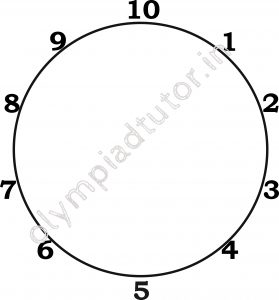Base and Complement are very important in Vedic Mathematics and form the basis of many calculations.
Base:
As explained above we work in a base 10 number system. In order to ease our calculations we can take any number ending with ‘0’ i.e. any multiple of 10 as our base.
COMPLEMENT
The Complement of a number is the difference between that number and the next higher power of 10.
10’s complement:
This includes all 1 digit numbers. It is the number that should be added to make it 10.
The complement of 6 is 4.
The complement of 7 is 3.
100’s complement:
This includes all 2 digit numbers. It is the number that should be added to make it 100.
The complement of 55 is 45.
The complement of 89 is 11.
Finding a complement of a number:
Continue reading →



